Back when I first wrote this article, I knew a decent amount about lifting.
Sure, when it came to getting stronger I knew a ton, but when it came to building muscle, I didn’t know a lot.
Since then, I’ve learned a bunch of new tips and tricks that will allow you to build more muscle faster!
Check them out!
On This Page
- 1. Get Stronger
- 2. Ditch The Barbell For Upper Body
- 3. Focus On Recovery
- 4. Add Weight
- 5. Intensity Matters
- 6. Track Workouts & Switch Exercises When You Stop Progressing
- 7. Eat More Protein!
- 8. Consume Protein Shakes In Milk To Increase Calorie Intake
- 9. Increase Training Frequency
- 10. Train As Much As You Can Recover From
- 11. The More Carbs You Eat, The Better!
- 12. Eat More Food!
- 13. Sleep As Much As You Can
- 14. Do Some Cardio
- 15. Have Reasonable Expectations
- 16. Rest Longer Between Sets
- 17. Progress Slowly
- 18. Use The Right Rep Ranges
- 19. Leave Your Ego At The Door!
- 20. Find Exercises That Work For You!
- 21. Stay Consistent
- Conclusion
1. Get Stronger
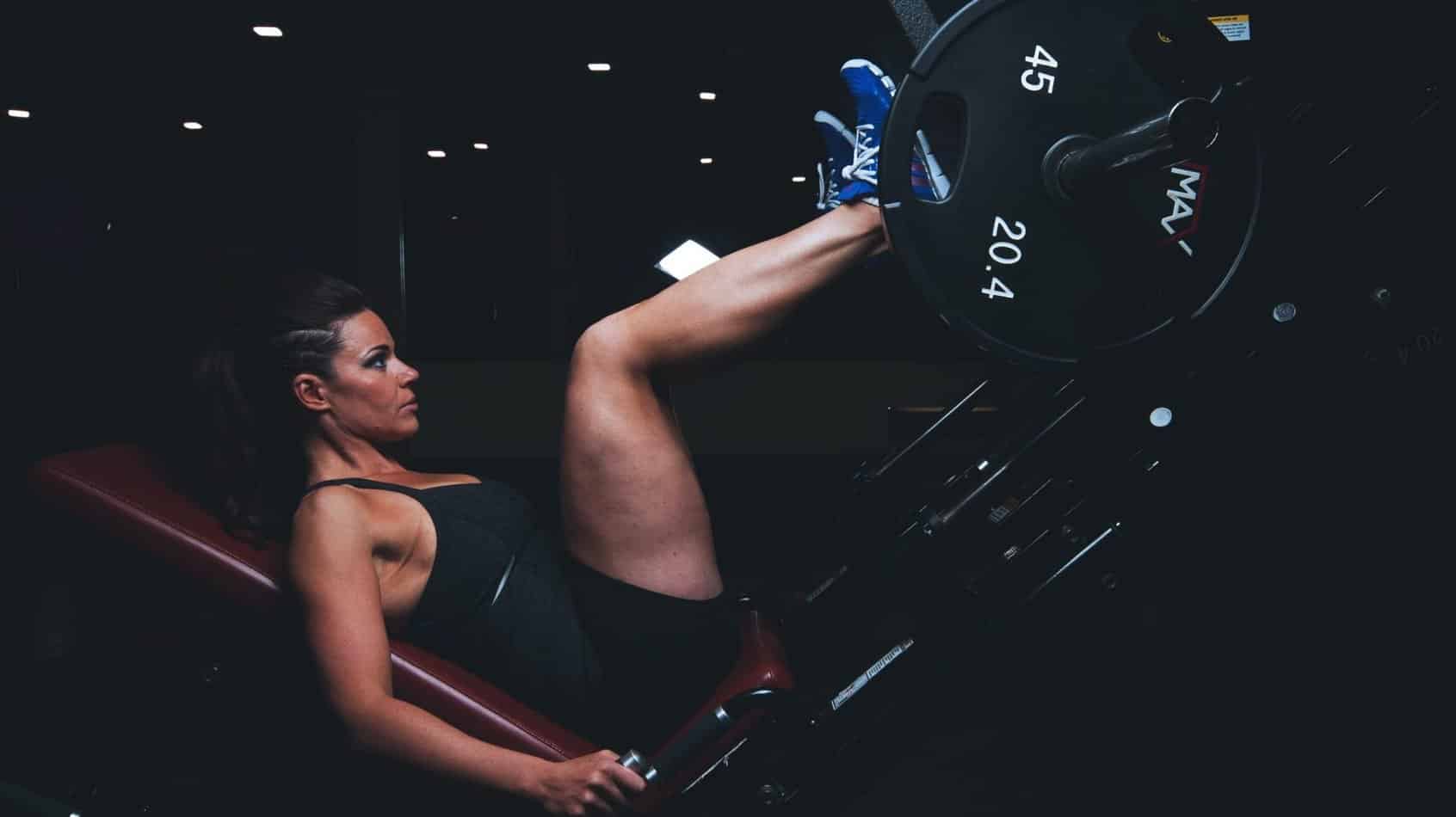
This is such an easy tip I had to put it first!
If you aren’t getting stronger, you’re not going to be building much muscle at all.
You want to progress in weight and reps over time.
If you go from 200 for 5 to 200 for 10 on the Stiff Leg Deadlift, I guarantee you not only got stronger, but you built more muscle as well.
That doesn’t mean heaving the weight around with tons of momentum, though. You need to keep your form consistent from workout to workout.
As long as you do these two things, you will build muscle for life. Just stay the course and keep getting stronger.
2. Ditch The Barbell For Upper Body

This tip used to cover using barbells for your training to get bigger.
In reality, a lot of barbell movements aren’t that great for maximizing hypertrophy, especially when it comes to training the upper body!
The reason for this is simple: barbells don’t allow you to train the upper body musculature anywhere near as well as cables, dumbbells and machines.
Sure, you can load up a lot of weight on them and train a bunch of body parts at once.
However, that isn’t what you should be focusing on when you’re training for muscle mass.
You want to train the muscle tissue directly with the best movements possible.
If you’re trying to train the clavicular head of your chest, you need to ensure your arm path is correct as well as horizontally abducting, as that’s the primary function of the pecs.
This is why a barbell bench press isn’t going to be the best chest builder, as you’re literally fixed with how close you can bring your hands together.
Something like dumbbell or cable presses and flys will allow you to train the pecs in the most optimal way possible.
From a biomechanical standpoint, the best way to train for muscle growth is with movements that fit your structure, allowing you to overload on those movements, and train the muscles in the way that they are designed.
Bottom line: barbells aren’t king for everything. Especially for building muscle.
3. Focus On Recovery
One thing I feel most people miss out on is focusing on proper recovery. Simple things like doing active recovery on your off days (aka not sitting on your ass), getting enough sleep, and consuming enough calories come to mind.
On top of this, not killing yourself in your workouts is definitely something many people don’t get right!
Think about it, every time you train you’re digging a hole. The fatigue you build-up has to diminish before you start seeing muscle gains. If you just keep digging a hole with more training that you aren’t recovering from, you’re essentially digging an early grave.
Not literally, just figuratively of course.
Your goal is to train as much as you can RECOVER from. If you want to work out 6 days a week with thousands of sets, but your performance is going down and your body feels like crap, that’s bad!
Focus on recovery and don’t overreach!
4. Add Weight

This goes right along with getting stronger. If you see people working out at the gym at the same weights week after week without any noticeable progress to show for it, odds are they aren’t building muscle, unfortunately.
This is one of the main things I’ve had to work on with my clients. They think it’s because we’re trying to build muscle, which means all the sets are supposed to be lightweight for a ton of reps.
This is definitely not the case!
If you start with a weight you can do for 10 reps, and eventually you build up something insane like 50 reps with that same weight, you need to increase the load!
Obviously, you want to do more reps, but stick to the 5-20 rep range overall. Sets over 20 are usually just going to be a waste of time and energy.
5. Intensity Matters

I just went over why adding weight is important. Here’s another reason why.
Your overall intensity matters as well. You can’t just do super high reps (30+) and continue to build muscle. If that was the case, cyclists and other long-distance athletes would have the biggest legs in the world!
Because of this, you need to push the intensity in the proper rep ranges to get the maximum growth response. Anything lighter than 2 reps in the tank is a waste of time.
If you want to build the most muscle possible, you need to be training close to and to muscular failure.
If you’re just training with 3 or 4 reps in the tank while trying to do a ton of volume, trust me, this is going to burn you out incredibly fast.
Training to failure isn’t all that fatiguing as long as you keep your volume low to moderate, after all.
The main reason you need to train close to failure is simple: your muscles need to accumulate enough mechanical tension for hypertrophy to occur.
Mechanical Tension is when your muscles involuntarily slow due to fatigue.
By training close to/to failure, your muscles are forced to recruit as many muscle fibers as they possibly can.
This is why training to failure is so important to maximize muscle growth.
Without it, you have to do a ton of extra volume to accumulate enough effective reps to start muscle protein synthesis.
Plus, how the hell are you supposed to know what 4 reps in the tank actually is?
Also, this goes without saying, only push to true muscular failure on movements with a high degree of stabilization.
Things such as chest-supported rowing movements, leg extensions, and cable flies are examples where you can brace hard and form breakdown is hard to occur.
Exercises like Stiff Leg Deadlifts require a ton of moving parts and your form can easily breakdown training to failure.
For movements like these, one rep away from failure or once your technique starts deteriorating is what you want to do!
6. Track Workouts & Switch Exercises When You Stop Progressing
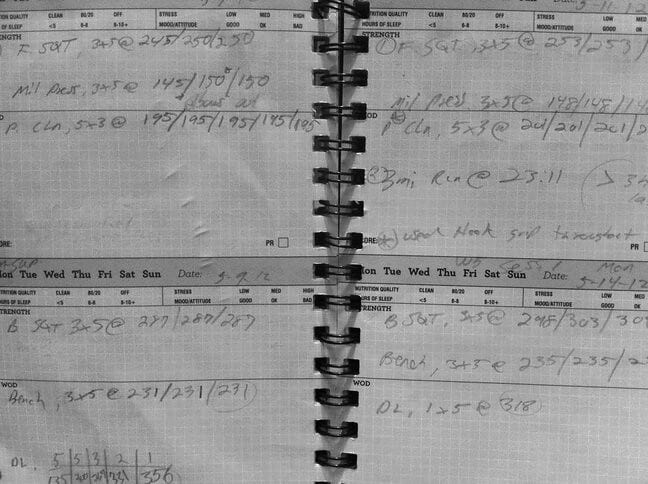
A lot of times, people tend to go to the gym and do random workouts week after week. They see a cool new exercise and just throw it in their workout without any thought at all.
Even worse, they don’t track their progress over time and barely make any gains at all.
This is a recipe for disaster and I see it all the time. How can we fix this?
By tracking your workouts, of course!
If you don’t track your sets and reps, how are you going to see what’s working and what’s not? Your training notebook is the single most important resource you can ever have as a lifter.
One of the main reasons for this is what it allows you to track. Namely, progression with your different exercises.
If you’re progressing and making awesome gains on a couple of exercises, changing them would be foolish.
This is where tracking comes into play! Because you know what exercises you’re progressing on, you can keep those in and change out the ones that aren’t working.
I recommend giving an exercise between 3-6 weeks of progress before you decide if it’s for you or not.
If you’re increasing your weight and reps on Barbell Curls, getting huge pumps in your biceps, and kicking ass overall, there’s no reason to change that exercise out!
When in doubt, keep the things that are useful in your training. Discard the rest!
7. Eat More Protein!

This one is super basic, but to build more muscle you need to consume more protein!
In general, you need more protein when losing weight to maintain muscle mass. This is due to the decreased calorie and carbohydrate intake.
When gaining, you have an increase in calories and carbs. Because they are muscle sparing, you don’t need to consume more than 1 gram of protein per pound of body weight to build muscle.
If you’re 200 lbs, this is 200 grams of protein per day. Easy as that.
If you’re like me, you want to eat more carbs because they’re definitely tastier and cheaper than protein.
You can go as low as 0.8 grams of protein to build muscle in a calorie surplus.
As long as you have these two things covered and your fats are in a healthy range, you can put the rest of your calories into carbs.
8. Consume Protein Shakes In Milk To Increase Calorie Intake

If you’re having difficulty eating the required number of calories to gain muscle mass, try out this simple trick.
Eat your main meals during the day and then consume a protein shake in milk to increase your calorie, protein, and carbohydrate intake drastically. This is very easy to do and doesn’t require much effort at all.
The best part is, drinking liquid calories won’t fill you up as much as eating whole foods.
If you need a trick to get your calories up, try this one out and let me know how it goes!
9. Increase Training Frequency
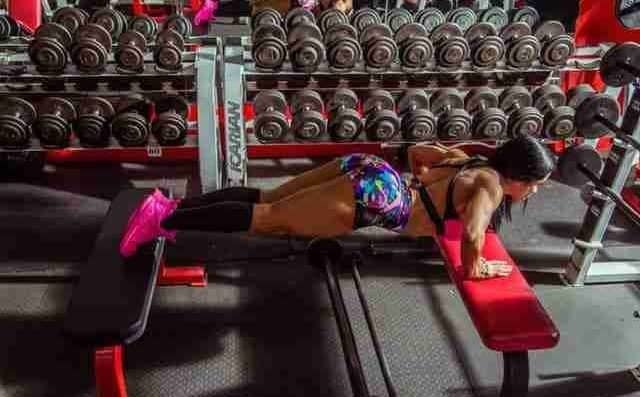
When it comes to overall training frequency, you have a certain range of minimum and maximum sessions you should be trying to hit.
1 session per week is no good, and 7 per week is also a bad idea. This gives us a range of 2-6 training sessions per week.
The main thing to consider is how many days you can REALISTICALLY commit to. Just because you want to train 6 days a week doesn’t mean you can actually do it.
You have to see how it works in your daily life. If you can consistently train 3 days a week, this is much better than trying to fit 6 sessions into your week.
Find a schedule you can stick to and train as much as you can commit to. Working out 1-2 days a week just doesn’t cover it from my experience.
If you have a choice between 2-6 days per week, sitting in the middle at 3, 4, or 5 days per week would be best in my opinion.
10. Train As Much As You Can Recover From
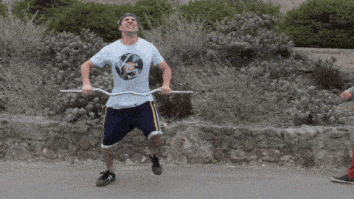
This is a very important point that needs to be made. Most people in the gym think they’re training hard but are severely under training.
I know this because of the major differences in results when my clients have trained themselves in the past. They always say that the workouts we do are much more difficult than anything they’ve done in the past.
And this isn’t because I am just training them hard to make them sore, I’m adding sets, reps, and weight that they can recover from.
If you aren’t recovering from your training, you’re not growing, unfortunately. With this thought in mind, you need to train as much as you possibly can to build the maximum amount of muscle possible.
This doesn’t mean 1,000 sets and workouts per week. For most people, 3-6 hard sets per muscle group, taken close to failure, is the sweet spot.
I’ve tested this extensively with myself and with my clients. The more you can train and recover from, the better your progress is going to be.
11. The More Carbs You Eat, The Better!

This is an important lesson many people need to learn. Everything else being equal, the more carbs you consume, the greater your potential for muscle growth is.
Anabolism is, in simple terms, the process of building muscle tissue in the body. A major player in this process is insulin. By consuming more carbs throughout the day, your insulin levels will be higher as well.
Higher insulin levels, combined with proper protein intake and weight training, result in more muscle mass.
Another major benefit of increased carbs over fats, they don’t store as fat in the body as easily as dietary fat does. By consuming more carbs than fats in a calorie surplus, you’re less likely to store them and burn them for fuel instead.
Speaking of fuel, carbohydrates are the body’s preferred energy source. By eating more than the minimum requirements, you can guarantee that carb intake is not what limits your training performance.
The final benefit we get from a higher carb approach has to do with maintaining muscle mass. Carbs are incredibly good at preserving muscle tissue.
So great in fact that you don’t need as much protein if your carb intake is high enough!
The more carbs you consume, around training especially, the more likely you are to build more muscle mass and prevent muscle loss from hard training.
Next time you focus on building muscle mass, eat as many carbs as you can! We do this by incorporating the following nutritional guidelines.
- Consume 0.8 grams of protein per pound of bodyweight instead of 1 gram.
- Consume 0.3 grams of fat per pound of bodyweight for proper hormonal function.
- Consume the remainder of your calories from carbs!
By using these guidelines, we can ensure we’re consuming as many carbs as we can to build the most muscle possible!
Try it out and let me know if you can see a difference in your progress! I definitely think you will!
12. Eat More Food!

As explained in my article on if you can gain muscle without eating a lot of food, the most important thing you need for muscle growth to occur is eating in a calorie surplus.
You can work hard every day for the rest of your life, but if you don’t have the right building blocks, you’re not going to build much muscle.
You have to train hard, sure, but eating enough calories every day is just as important.
So, how many calories do you need to gain muscle?
Enough to gain no more than 0.5-1% of your body weight per week. For a 200 lb man, this is around 1-2 lbs per week.
By taking it slow and easy, you minimize fat gain and improve your chances of building lean muscle tissue. The other thing to consider is you can’t force-feed muscle growth.
You give it the signals to grow by training hard, consume just enough calories to build muscle, and that’s it. Anything in excess will just result in increased fat gain.
It’s cool to say you built 20 lbs of muscle in 1 month, but unless you’re a beginner on massive amounts of steroids, your body can’t possibly synthesize that much muscle tissue that quickly.
In an ideal world, you would still only be adding around 10 lbs of muscle from that 20 lb weight gain.
The best course of action is to increase calories by 5-10% and track how much weight you gain. If you’re under 0.5% add more calories, if you’re over 1% keep the calories the same. If you’re somewhere in the middle of this range, you’re on the right track.
Take your time and you won’t have to waste time losing a bunch of excess fat down the road!
Slow and steady wins the race!
13. Sleep As Much As You Can

I’m sure you’ve heard this before, you don’t grow in the gym, you grow when you sleep. And it’s absolutely true!
Sleep enhances muscle recovery through muscle protein synthesis and the release of human growth hormone.
Basically, the better your sleep is, the more muscle you’ll build and the leaner you’ll be. It also affects your workout intensity like crazy! I’ve trained people that didn’t sleep, and their workout performance drops by 50% most of the time!
If you feel like you aren’t recovering between sessions and your water/food intake is dialed in, your lack of quality sleep might be the problem.
Here is a list of things you can try to improve your sleep quality.
- Don’t Consume Caffeine Late in the Day
- Exercise Regularly
- Check For Sleep Disorders
- Don’t Eat Right Before Bed
- Optimize Your Bedroom Environment & Temperature
- Relax and Clear Your Mind in the Evening
- Try To Have Consistent Sleeping & Waking Times
- Don’t Drink Alcohol
- Take a Bath or Shower Before Bed
- Don’t Consume Liquids Before Bed
There are also a host of supplements that can induce sleep and relaxation as well. Here’s a list with links to the following.
If you find you’re consistently unable to improve your sleep, getting a sleep study done is recommended.
Find ways to improve your sleep, and you’ll find you build more muscle, lose more fat, and be much healthier than those that brag about how little sleep they get. It’s not healthy whatsoever, and your life depends on it!
14. Do Some Cardio

A lot of times I hear that doing cardio kills your gains in the gym. And while this may have some truth to it, doing zero cardio is a great way to ensure your work capacity doesn’t improve!
Think of it like this, if you aren’t in good cardiovascular shape, you’re going to have issues with recovery and pushing yourself in the gym. The better your gas tank is (cardio), the more work you’re going to be able to push out and recover from.
A lot of times you’ll hear Powerlifters say anything over 5 reps is cardio. Joking that they’re in horrible shape and can’t do more than 5 reps without losing gains is silly, however.
The best rep ranges for muscle growth are in the 6-20 rep range, which means you need to be in good enough shape to get the work done.
Building muscle is hard, so staying in shape is absolutely necessary to make it a little easier.
3 sessions at 30 minutes of steady-state cardio is all you need in my experience. The people that can’t manage this all seem to have issues recovering, unfortunately.
If you have to rest several minutes between high rep sets, you need to get in better shape! Basic cardio will improve recovery, keep your heart healthy, and even reduce soreness.
Just be careful with doing excessive amounts of cardio, it does send the wrong signals to your body.
Let me know what you like to do for cardio in the comments below! My favorite is the Airdyne which I recommend here in my top ten pieces of gym equipment.
15. Have Reasonable Expectations

This is an important lesson many people have to learn.
Building muscle mass is a long and arduous process.
You have to give your body the signals to grow through consistent weight training, focusing on doing more reps with more weight, all while eating enough to recover and fuel your workouts.
If you don’t do these things consistently for the long haul, you’re not going to make progress, unfortunately. And even if you do, those dreams of building 25 lbs of muscle in a month just aren’t rational.
Your body can only synthesize so much muscle per week. You can’t force-feed it with 10,000 calories or do a million sets to grow it faster.
Here’s a general idea of how much muscle you can expect to build per year if you’re consistent.
Here’s how muscle gains will look for most people, these figures come from Jason Ferruggia at JasonFerruggia.com:
Year 1: 20-30 pounds (if you start between 15 and 22 years old)
Year 2: 10-12 pounds
Year 3: 5-8 pounds
Year 4 & 5: 3-6 pounds
The next 10-20 years: 3-10 pounds
Based on these numbers, you can see how being patient, consistent, and realistic is incredibly important.
Most people can expect to add between 30-50 lbs of muscle mass over their lifetime, assuming they do everything correctly.
Obviously, this number is much higher if you use Performance Enhancing Drugs.
Unless you choose to take that route, take your time, enjoy the process, and work on getting stronger for life. That is all you can do to maximize your muscular potential!
16. Rest Longer Between Sets
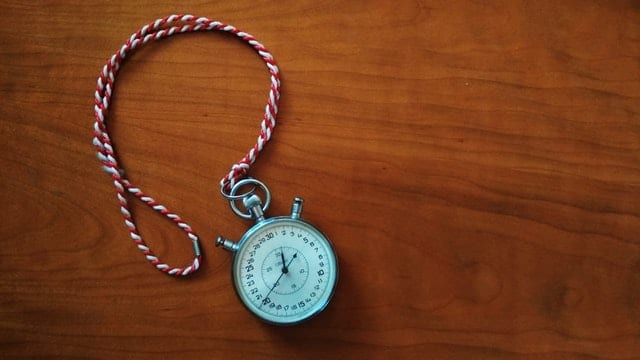
One of the most important lessons I’ve learned in my years of training is to not turn all of my workouts into circuit training classes. And while these are good for general fitness, they’re horrible for building muscle and strength!
Why?
To put it simply, you aren’t resting long enough between sets. If you rest any less than 1 minute between sets, you aren’t able to keep your training intensity high enough!
The best way to pack on muscle is by increasing your total volume with more weight, sets, and reps. You can’t do this if you’re jumping around from exercise to exercise.
Sure, you might grow doing this if you’re just starting out (everything works if you’re a beginner), but for the long haul, it’s a terrible way to train.
The old school thought process for resting is as follows:
- Less than 30 seconds: endurance training
- 1-2 minutes: muscle/hypertrophy training
- 3-5 minutes: strength/power training
- 5-10 minutes: horribly out of shape…fix it.
And while this seems pretty cut and dry, if your goal is performance, the more you rest the better. To a point!
The new school thought process for resting between sets makes more sense for all training modalities:
- 1 minute: best for endurance, suboptimal for strength and muscle building
- 3+ minutes: best for strength, muscle building, and similar for endurance
This makes much more sense to me, and just by looking at it, you can see why!
For endurance training, high reps and low rest periods make the most sense for building more stamina in the body.
For strength and hypertrophy training, your whole goal is performance. The longer you rest, the more weight and reps you can do.
If you have any questions on this subject definitely let me know in the comments below! The new school way of thinking makes much more sense from a practical point of view as well.
To learn more about how long you should be resting, check out this article by Brad Schoenfeld.
He is one of the most well respected and educated authorities on all things body composition. Definitely listen to what he has to say and learn from one of the best in the world!
17. Progress Slowly

This is a big one that most people have issues with applying. When you’re trying to build muscle, you want to consistently progress in load and reps.
This is how progressive overload works, of course.
Doing this slowly allows you to recover properly, maintain solid form, and increase muscle tension through the long haul.
If you can only do 8 reps with 80 lbs on the dumbbell bench, immediately adding 10 lbs the following week isn’t going to be a great long term strategy.
This isn’t sustainable whatsoever and definitely needs to be taken into account if you want to continue making muscular gains over the long haul!
The best ways I’ve found to progress are as follows:
- Increase weight by 2.5-10 lbs per week. By increasing the weight slowly, you can progress for a longer period of time safely. A good rule of thumb is to increase by 2.5 lbs for isolation work, 5 lbs for upper body movements, and 10 lbs for lower body movements. If you increase the weights faster than this, you will plateau quicker.
- Train close to/to failure. I used to think that just doing more volume was the way to go for muscle growth. Unfortunately, I was wrong, and I’m sure many of you have figured this out for yourselves as well. You need to accumulate more effective reps to build muscle, this means training hard enough closer to failure is the key. If you did 8 reps to failure last week and this week you did 9 or more with the same execution, you’re going to build more muscle. Eventually, you’ll need to add more weight, and that combination of more weight and reps is what causes hypertrophy to occur.
As you can see, smart and consistent training is absolutely the most important factor for growing muscle for life. If you get injured from progressing too quickly, your body will never be the same. Every injury is just another nail in the coffin.
Take your time and make this a lifelong venture. Small 5 lbs and 1 extra rep Personal Records done consistently are more important than 50 lb PR’s once in a blue moon!
18. Use The Right Rep Ranges

Using the correct rep ranges might not matter as much as getting stronger, but it definitely helps a ton!
There was a study by Brad Schoenfeld on the effects of different volume equated programs.
17 young men were assigned either a powerlifting-type routine of 7 sets of 3 with 3-minute rest periods or a hypertrophy-type routine of 3 sets of 10 with 90-second rest periods.
What they found over the 8-week period was that there was no significant difference in muscle thickness. This tells us that as long as the volume is equated, there is no major difference in muscular size. However, for maximal strength, the powerlifting style training was far superior.
Based on the data this makes sense, but on second glance, does it?
Think of it like this, how long does it take to do 3 sets of 10 with 90-second rest? Probably less than 10 minutes right? On top of that, you’re most likely not going to have any issues recovering with those lighter weights.
Now let’s look at the powerlifting style training, 7 sets of 3 is actually fewer reps and more stimulating per rep, but that’s super heavy. This beats you up considerably more than 3 sets of 10 ever will. On top of that, with the 3 minute rest periods, it would take over 20 minutes to do the same amount of work.
This tells us that we need to train with enough effective reps to build muscle.
Based on all of this information, we can absolutely say that for hypertrophy purposes, the best rep ranges are in the 6-20 rep range. This has been beaten to death thousands of times but I promise at least 90% of the best gains you will get come from this rep range.
Anything lower than 5 reps will be harder to recover and adapt to for the purposes of muscle building. When in doubt, stick to the 6-20 rep range for the majority of your work.
If you have any questions regarding this subject definitely let me know in the comments below!
19. Leave Your Ego At The Door!
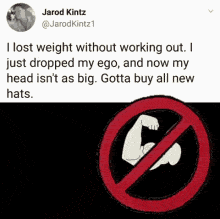
You hear variations of this all the time: “I give it 110% when I go to the gym!”, “pain is just weakness leaving the body!”, or some other nonsense that doesn’t hold up in the real world.
If you’re truly in pain at the gym beyond basic soreness or lactic acid buildup, you’re doing it wrong!
Going 110% also doesn’t make much sense either. If you go 110%, that implies you’re not recovering over the long haul and most likely leading yourself to many future injuries.
You also hear other statements from people concerning why “x exercise is bad for you.”
“Squats are bad for your knees, Bench Press is bad for your shoulders, deadlift is bad for your back.” The list goes on and on! I guarantee they had less than stellar form that formed this useless “opinion.”
The main thing these statements tell me is that these people had the same attitude about lifting. Go 110% and do more work than is necessary to get bigger and stronger.
The only problem is, whenever you push your body this hard, your recovery can’t keep up. Think of it like this, every time you train you’re digging a hole. When you recover, you’re filling this hole back up, so you can train again in the future with more strength, muscle and work capacity.
Here’s where it gets interesting, say you keep digging past your current recovery abilities, you only fill part of the hole with dirt and have a dip in performance because of it. Next time you train, you dig an even deeper hole.
Over and over again this occurs until finally, your progress comes to a screaming halt. Because you haven’t been recovering properly from overdoing it in the gym, you can’t progress, and the only option people use is to work even harder.
When this happens, you’re going to get injured. Whether it’s a muscle tear or something worse, you’re going to have to take time off to recover from it. When injuries like muscle tears occur, they’re never the same again.
Instead of trying to push above and beyond your current recovery abilities, keep the volume low-to-moderate and push close to failure with excellent technique.
By doing this, you can safely make progress rather than injure yourself and regret it forever. Take your time, let your body recover when it needs to, and don’t be an idiot in the gym.
Leave your ego at the door!
20. Find Exercises That Work For You!

There are tons of exercise suggestions people have out there, and they’re all great for the most part!
(If you’re advocating for Bosu ball squats or anything similar, nobody can help you, lol.)
You can take these suggestions and use them to form a solid training plan for yourself. You need to track your progress using these exercises and see if they’re giving you the results you should be expecting.
If you use the Dumbbell Bench Press for building up the chest, and you constantly feel a pump, notice you’re getting stronger in the 6-15 rep range and your chest is getting bigger, odds are that’s a solid exercise that works for you!
If you find that getting stronger at Barbell Bench Press just gets you stronger at the Bench Press and your chest isn’t actually growing, then it’s probably not a great movement for you.
That doesn’t mean it’s not an important movement for strength training! It just means that for hypertrophy, for you, there are better options.
Take another exercise such as the Barbell Row. It’s a fantastic strength and mass builder for the back, or at least it should be.
If you find that it just beats up your low back and your upper back isn’t growing much, it’s probably not a good fit for you.
Plus, for building muscle, exercises that allow you to stabilize effectively to train the muscle tissue correctly is the best plan of attack.
Training is all about finding the right exercises that work for you. If you neglect this part of training and never think for yourself, you won’t gain as much muscle, unfortunately.
Your goal should be to find 2-3 exercises per muscle group that consistently deliver good results. Always use one of these exercises to ensure you’re progressing but sprinkle in new movements every couple months to spur new growth.
By doing this, you’ll get better results over a lifetime instead of using a bunch of movements that aren’t delivering.
What are the best exercises you’ve found for yourself through your training journey? Let me know in the comments below!
21. Stay Consistent
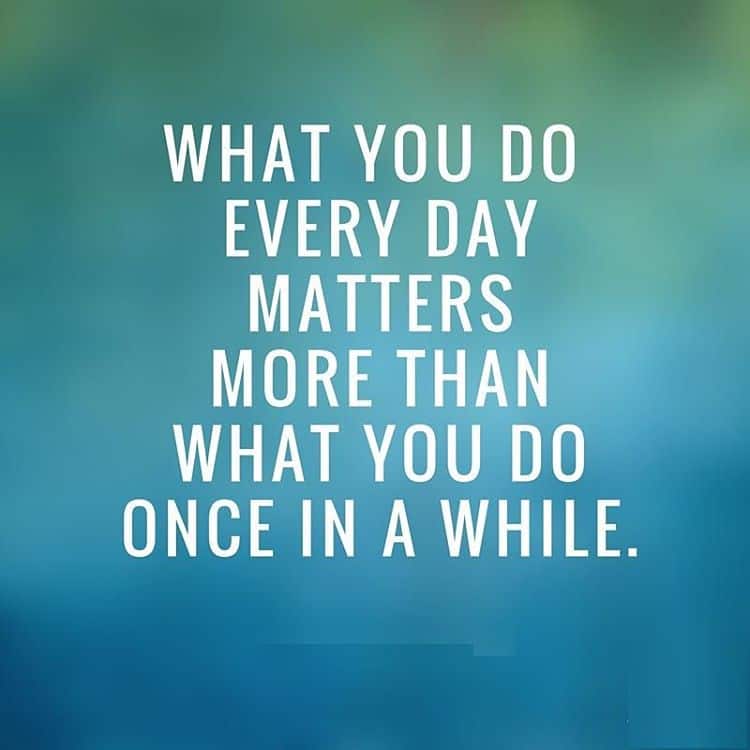
This is the final tip for the day, but out of all of these, it’s the most important.
You’ve probably seen it before, people come to the gym every year after New Years to FINALLY start their fitness journeys! They bust ass for a couple of weeks, diet hard, do their cardio, and then when February comes along, the majority of them vanish!
This is the sad state of affairs for the majority of the population. They want to see results and see them now! But, for whatever reason, they give up before any of the results start showing themselves.
This is something that plagues the entire world of strength, bodybuilding, and fitness. To make progress consistently for life, you have to be just that, consistent.
No matter what cool program you find to build big biceps, or diet that promises 6 pack abs in less than 6 weeks (always bullshit by the way), if you aren’t consistent it’s never going to work!
I could give you every tip in the world, but if you refuse to apply them consistently, none of them matter.
You cannot get angry about the results you didn’t get from the work you didn’t do. Nobody is going to feel bad for you.
You have to want it badly enough to make it a lifestyle. If you don’t, you’re just going to end up regretting it for life. Every day you look in the mirror, you’re going to wish you put in the work and kept doing it. Until you get older, looking back on would have, should have, could have.
Don’t live in regret. Start working today, not next Monday, not next New Years for god’s sake, start right now!
The only way to make this happen is by doing it today, tomorrow, and the day after that. Consistently and forever. It never ends or gets easier. You just get stronger.
Conclusion
Now I turn it over to you!
What tips for building muscle do you plan on incorporating in your own training?
Let me know in the comments’ section below!
Until next time,
-Dante